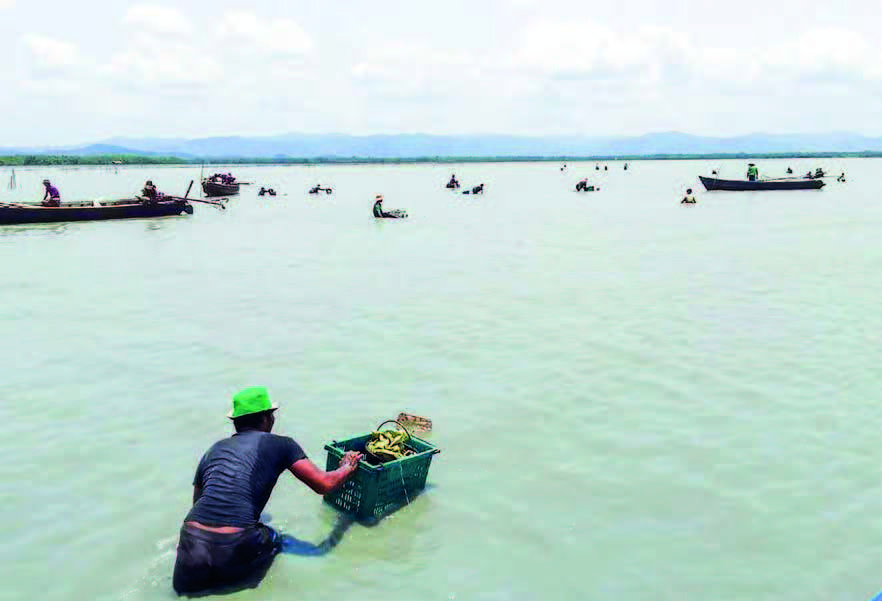When one hears Gin, it might be considered as ginger (locally called Gin in upper Myanmar regions) that is utilized in traditional medicine as well as in cooking. Meanwhile, locals in Taninthayi Region realize the term Gin as a blood clam. The blood clam has two shells. Some called them the blood cockles. The residents in Taninthayi widely called them Gin. The blood clam from the region is primarily exported to Thailand, generating foreign earnings and creating jobs for the local community.
The following is the interview with Daw Ni Ni engaged in blood clam farming in Yaykantaung village-tract, Kyunsu Township, Taninthayi Region, by Myint Oo (Myeik), the journalist dwelling in that region.
When did you commence the blood clam farming business?
I noticed the Gin in 2011. I had a knack to start farming the baby blood clams. Before I got into that business, I did market research by selling big blood calm in the potential Thailand’s market.
Please tell me about the market potentials in Thailand at that time.
The blood clams were offered only 10 Thai Baht per kilo then. As it was not profitable enough to be placed in the market, I just farmed them only. Later, it fetched 15 Thai Baht. At present, the clam receives up to 90 Thai Baht per kilo.
Could you tell me the expansion of the business operation?
We were granted a business licence to farm the blood clams in the 2013-2014 financial year. Thereafter, the business has become popular. It was incredibly trendy to run this business in the 2017-2018 FY. The department concerned keeps issuing the licences.
Could you elaborate on Myanmar’s blood clam market and export?
Earlier, we used to sell them in Thailand as per the rate they offered. Now, they’re commercially valued even in the domestic market. We distribute the blood clams to the clam farmers. The business can be considered lucrative.
How does this business contribute to the local community?
From baby blood clam farming to market, the business creates job opportunities.
How about the current market situations?
The average price of the clam is K8,000 per kilo when there are less than 100 clams. The price is cut to K6,500-K7,500 if the number exceeds 100 clams.
Please explain about clam harvesting.
The capacity of a clam farm is 30,000 clams. When the blood clams reach one kilo with less than 100 clams, it’s the right size to deliver them to market.
How is the success rate of clam farming?
The death of baby blood clams occurs. The production rate this year is around double to triple. We have yet to calculate it in detail.
Is there any promising market beyond Thailand? Could you tell me further plans to explore more markets?
As of now, we are solely relying on Thailand’s market. It seems that Thailand re-exports them to other markets. The blood clams do not survive in high temperatures. We are still far from systematic farming practices.
I would like to know how you purchase the clam farming site.
We buy them according to the market rate. We also raise a community fund. Whoever can harvest the blood clams. About 500 boats are used for harvesting.
Could you explain about the spawning season?
The spawning season is normally in October. We open our constructed pond surrounded by mud and clay soil depending on up-tide and down-tide during the spawning season. This way, the blood clam population increases.
Is there any challenge or something you would like to add on?
There are around 100 clam farming ponds in Taninthayi Region. We have concerns over the scarcity of the clam larvae. This business can thrive throughout the year as long as there are young seeds to be raised.
Thank you for taking time to answer the interview.
Translated by EM



